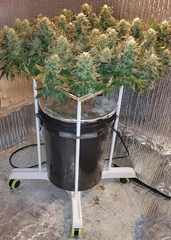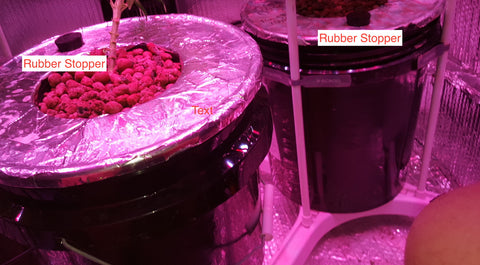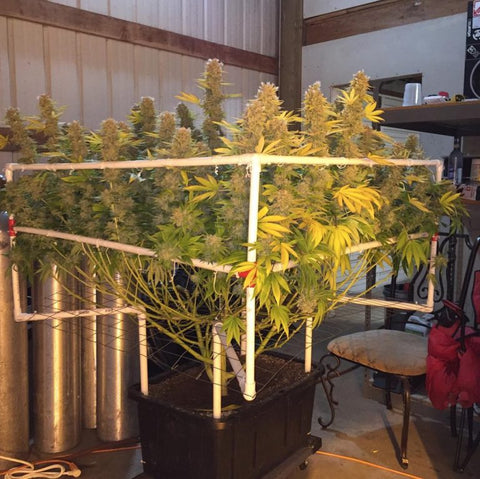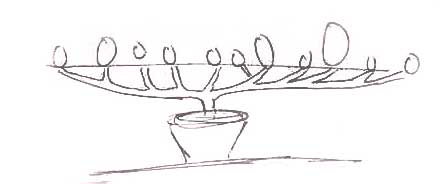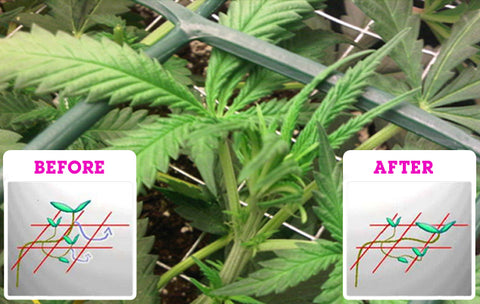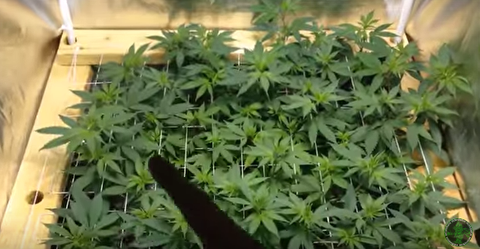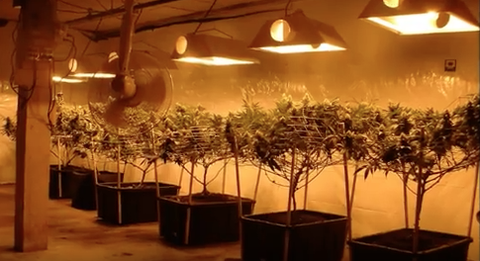ScrOG blOG™ — lst
Why Single Plant ScrOG?
Single plant ScrOGs (Screen of Green) make most sense as apposed to 2 or more plants under a large net. Here are 10 excellent and compelling reasons why.
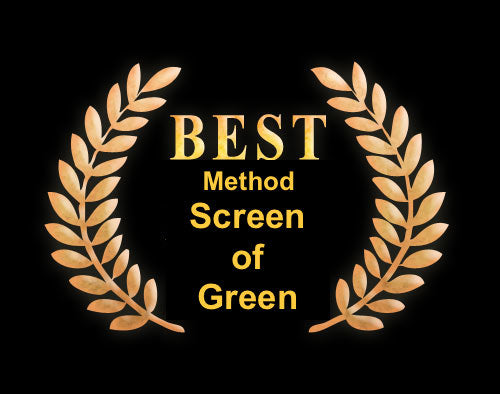
The Best Supporting Method
And The Best Supporting Method Goes To…
Screen of Green, For Its Starring Role In Marijuana Gardens Everywhere!
In our first article in this series, we outlined the screen of green technique and its pros and cons.
To recap, screen of green, or SCROG, was created by growers working with limited ground space and/or vertical height in their garden area. It’s useful for small spaces, and in situations when a grower can only grow a few plants.
SCROG growers train their plants’ branches to grow into and along a horizontal support screen that’s suspended above the plants.
Training the plants, known as low stress training, or LST, creates plants with multiple main branches that yield more bud weight. This form of marijuana growing is especially useful for maximizing yield per harvest.
The key component of a SCROG garden is the screen itself, which consists of a flat support structure to allow for horizontal mounting of screen material such as netting or string.
Two main types of screening apparatus have been popularized for SCROG cannabis cultivation. One type is fixed in place and mounted over a cannabis gardening system that might be a grow table, ebb and flow table, or deep water culture bucket system.
Multiple plants grow under the screen; their branches are woven or otherwise fastened to the horizontal screen.
Meet Scrogger, Innovators From The Lone Star State
Instead of that approach, we recommend the second style of SCROG cultivating, which involves having an individual plant in its own grow container served by its own apparatus.
This kind of growing is facilitated by the P SCROG system made by Scrogger, a company headquartered near Austin, Texas.
Scrogger specializes in SCROG gardening and has created state-of-the-art, multilayered, adjustable screen kits to fit almost any SCROG garden size or style.
P SCROG by Scrogger features a height-adjustable apparatus, several screen options, and a base that can support up to 250 pounds of weight. Said base is mounted on casters so the entire system and the plant within it can be rotated in a complete circle, and can be easily moved to another part of the grow operation.
This mobility and ease of access erases the disadvantages of SCROG gardens that have several plants growing under and sharing a large fixed screen, including difficulty with watering, trimming, even accessing the lowest parts of the plants in the middle of the arrangement.
Margo Mermelstein co-founded Scrogger in 2015 along with her husband Gary. The family-run business owns the patent for its revolutionary gadget that now sells nationally, as well as in Australia and Canada.
Margo explains, “Our unique selling point is the screens. They are, if you will, our secret sauce, because they are clear, flexible, reusable — and that’s what people like. Whether growers are using our portable units or the 2×4 or 4×4 [units], which are not portable, we’re finding the commonality that runs through all of it is our unique screen.”
Scrogger screens are made from polycarbonate, with an impressive flex strength of 13,500 PSI. You can almost bend this material in half and it won’t break.
They’re built to resist degradation factors common in indoor marijuana gardens such as water, nutrients, ultraviolet light and heat. They’re nonporous, washable and food-grade, meaning the polycarbonate doesn’t contain any dyes or recycled plastic that’s harmful to humans. In addition, the food-grade designation means no other harmful chemicals were used in either the resin or in production of the plastic container.
This is in contrast to materials commonly used as screens, supports and trellising in SCROG gardens. Growers often resort to DIY methods for constructing SCROG apparatus. Some SCROG growers use metal wire, string, cheap plastics, wood, PVC pipe and conduit for their plant supports. These materials cause a variety of problems including off-gassing, unstable supports, sagging, disease vectors, and transfer of harmful toxins into the plants.
Scrogger systems eliminate those issues. They’re elegantly engineered plug-and-play tools created specifically for serious growers, and can be customized to fit your budget and your needs.
Such patented systems allow maximum versatility as growers train their plants, because the gadgets can be precisely height adjusted as plants grow, and the systems also allow for stacking secondary screens above the primary training screen that sits closest to the root zone.
Check out the below YouTube video to see how to assemble a Scrogger system.
“[The screen is] great for people who have smaller number of plants, 12 or less, so they can turn them around, trim them — do all kinds of things, including adjust the screen’s height as the plant grows,” Margo continues.
“People who get up into 50 plants or more are looking to use our screens by themselves in higher configuration. It really depends on the individual and what they’re doing for their grow.
“Plus it’s great for people who are handicapped, because it gives them more flexibility.”
When you have a SCROG unit encasing each plant individually, the grower is afforded full access and is likely to enjoy superior gardening outcomes.
We recommend Scrogger because the engineering and materials are top-rank, and because the company’s customer service is excellent, as is it unusually comprehensive product warranties.
Especially for marijuana growers who haven’t cultivated crops with SCROG before, the Scrogger systems are much easier to assemble and use than other pre-fabricated or DIY plant support systems. These systems give you the ability to more easily and quickly maximize the benefits of this style of marijuana growing.
In our next articles about SCROG, we’ll take a deep dive into LST, as well as customized grow lighting, root zone and feeding techniques.

P SCROG Kits
or
SupportOurPlants@SCROGGER.com
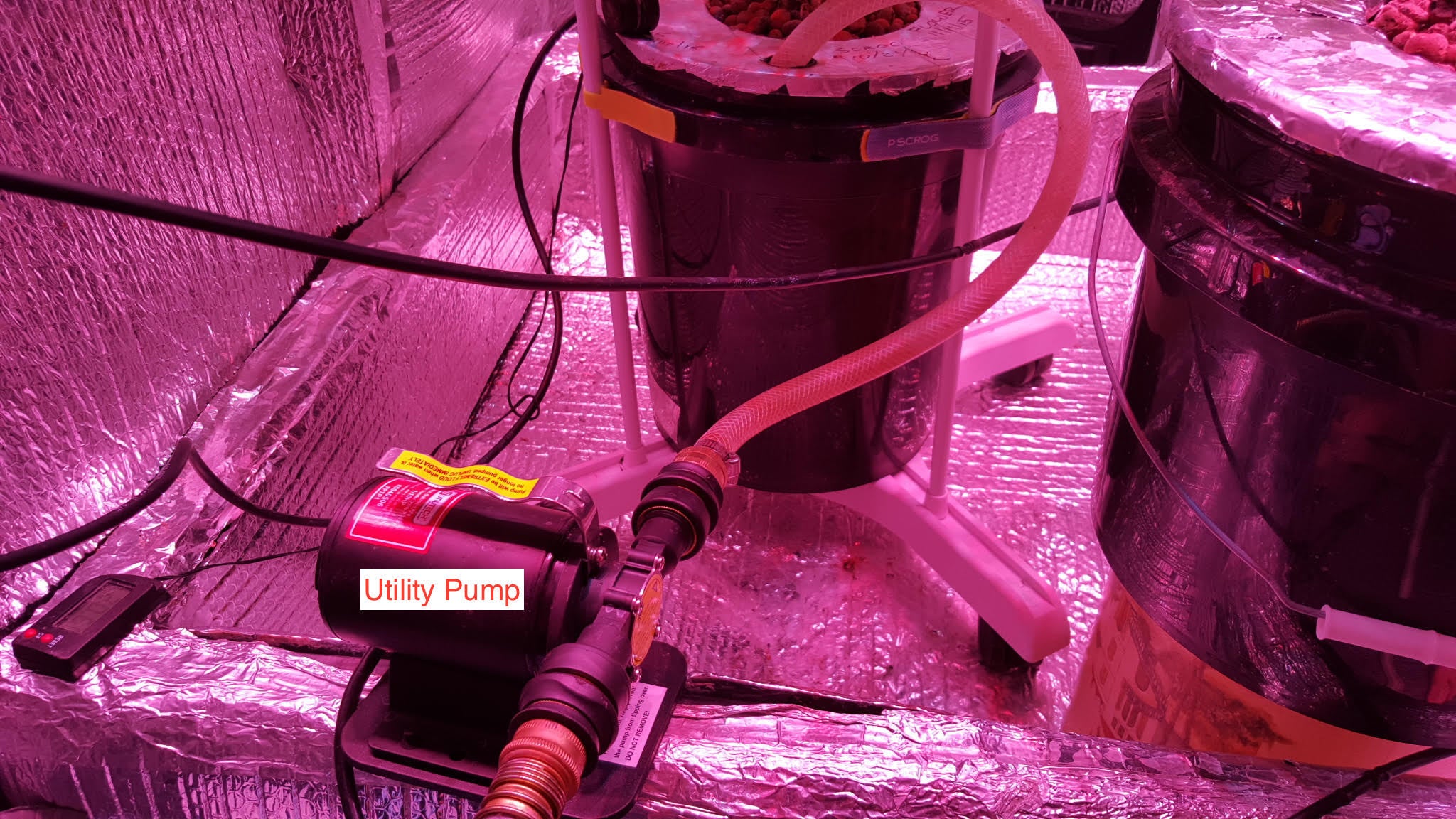
Changing nutrients under a DWC ScrOG
ScrOGging with Deep Water Culture (DWC) presents unique challenges compared to other methods of growing under a ScrOG. The biggest issue DWC growers struggle with is topping off and changing out nutrients (nutes). However, DWC growers can enjoy all the benefits of ScrOG without ever removing the net pot, disturbing the plant, ScrOG or root zone with this simple method.

2 x 5 gal individual portable DWC ScrOG using P SCROG Primary Kits
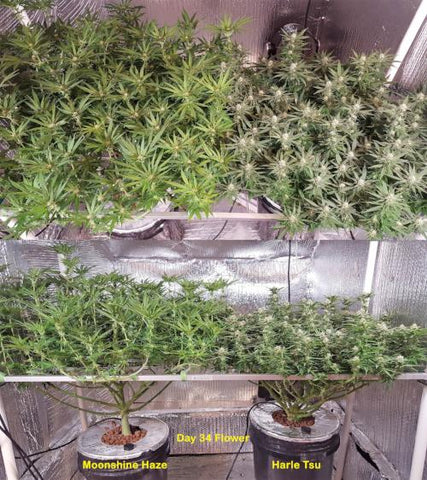
2 x 5 gal DWC under framed and fixed P SCROG 2x4 Kit
Like anything else, there may be many solutions to this issue. One solution you may find quite useful involves exchanging nutes with a pump and topping off between changes with a watering can.
Nutes can be changed using a common small utility pump found at most hardware stores.
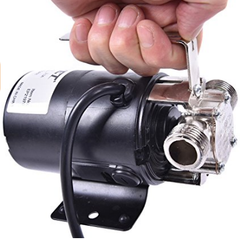
It is best to prepare your buckets at the beginning of the grow. Drill a hole in your net pots big enough to receive the end of a garden hose and buy rubber stoppers to plug holes when not in use.
The pump utilizes common garden hoses to transfer liquids. In the case of DWC, the nutes are sucked into the pump and pushed out the other end. The flow is unidirectional so the gardener uses the pump's input to suck old nutes out. Then the pump's output hose is used to push old nutes into an empty "old nutes" bucket. Old nutes can be used on outdoor plants, don't throw them away!
The pump's hoses are reversed to add new nutrients to your grow's DWC buckets. Then the pump's input hose is used to push fresh nutes into your grow's buckets.
IMPORTANT!
DWC reservoirs of healthy cannabis plants are full of robust and abundant root systems that will burn out your pump if sucked into the intake side. This is easily addressed with "hose filters" found at hardware stores. Some pumps come with filters.
The filter should be placed in the end of the hose that goes into the reservoir, not the end that screws onto the pump. This placement makes it easier to clear any accumulated debris during pumping.

Hose Filters
Amazon. Home Depot, Lowes
Root debris will accumulate in filters during the process and should be kept clean to avoid blockage and burning out the pump.
In between exchanges, nutes can easily be topped off using a common watering can through the same holes.
Note
Reservoirs and root zones can be kept clean through use of H2O2 after each nute exchange and/or through the use of Hydroguard.
If you have another solution you would like to share, please reply to this ScrOG blOG.

or
SupportOurPlants@SCROGGER.com
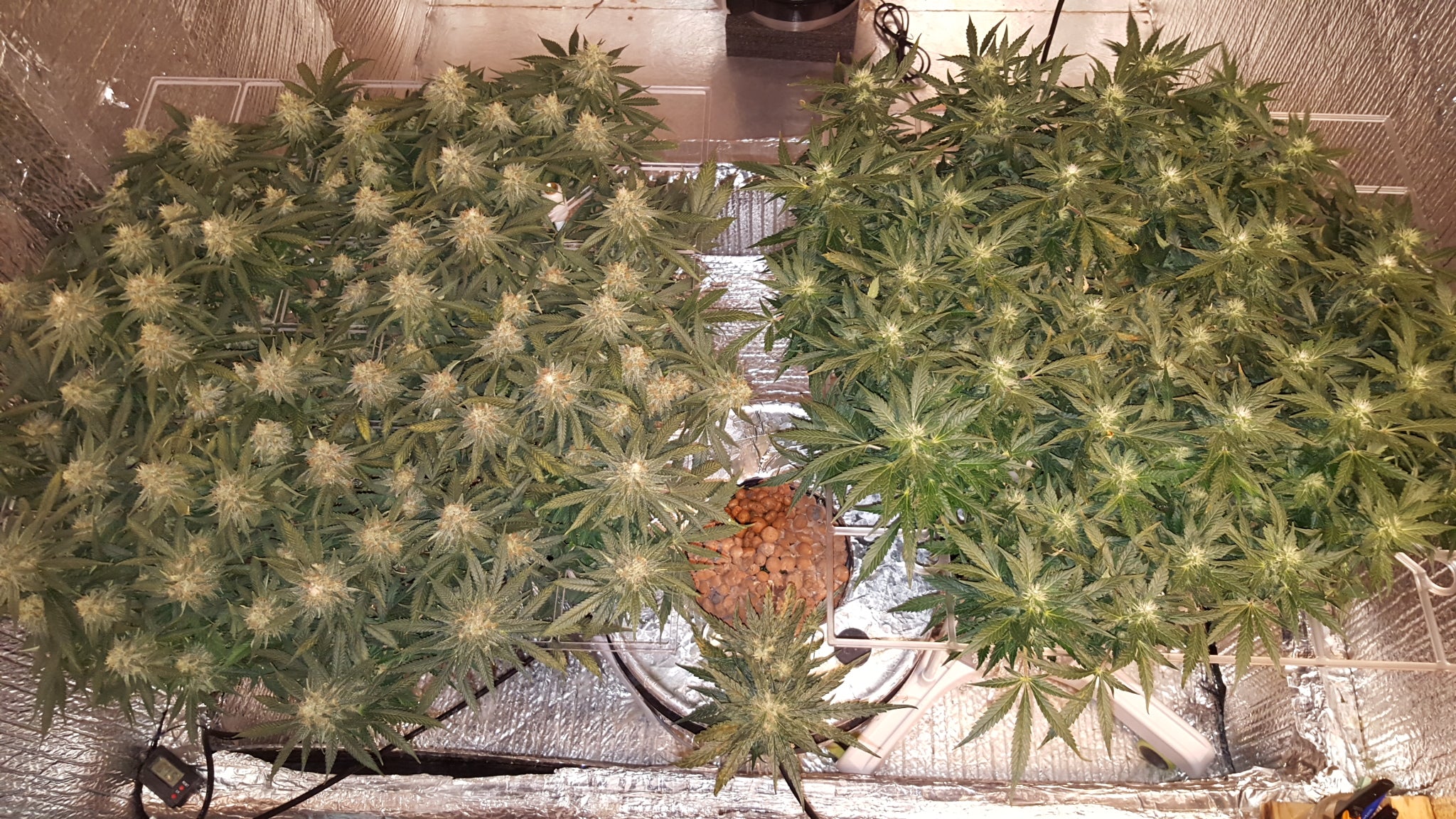
Tale of Two Widows
Long before SCROGGER ever sold its first P SCROG, a friend out west by the name of J. Washington was diligently doing trial grows with some prototypes we sent him. "J" catalogued a landmark grow in a 420Magazine grow journal called "Tale of Two Widows".
J is a long time lover of the White Widow strain and has had significant experience growing it hydroponically. However, in his 2015 grow he saw dramatic differences from what he had seen in the past.
Although the two White Widows came from the same batch of seeds, they grew and looked very different.
The final product looked totally different and yielded different as can be seen below.

Read more about the "Tale of Two Widows" at 420Magazine...


P SCROG Kits
or
SupportOurPlants@SCROGGER.com
- Gary Memelstein
- Tags: growing cannabis hydroponics indoor grow low stress training lst scrog scrog kit scrog method scrogging trellis

Best "How to ScrOG" Guides
Sea of Green (SOG) vs Screen of Green (ScrOG)
A great deal of confusion exists regarding the difference between Sea of Green (SOG) vs Screen of Green (ScrOG) methods of growing cannabis. Before I present what I consider to be some of the better "How to ScrOG" Guides, allow me to briefly define the difference between SOG and ScrOG.


- Ease of providing individual plant care - When 2 or more plants are placed under a single ScrOG net, those plants are typically treated the same out of necessity. Growers have trouble getting to plants at the far reaches of the grow. All plants are treated the same despite their strain maturity level or health.
- Simple to move around if necessary - If you need to pull a plant from a grow for any reason, you need to cut the net and remove it, leaving remaining plants unsupported.
- Improved light distribution - Growers can rotate, custom adjust heights, plants grow at different rates and mature a different rates.
- Easy to remove troubled plant from grow space, lowers risk of damage to remaining crop
- Easier to water and flush
- Allows gardener to harvest plants individually at precise maturity
- Eliminates crawling under nets/wire mesh
- Wheel chair / handicap accessibility
- Irrigation equipment accessibility
- A single plant can be scrogged at an optimal time in its growth cycle. Otherwise, only the most aggressive growing plants enjoy the full benefit of Screen of Green.
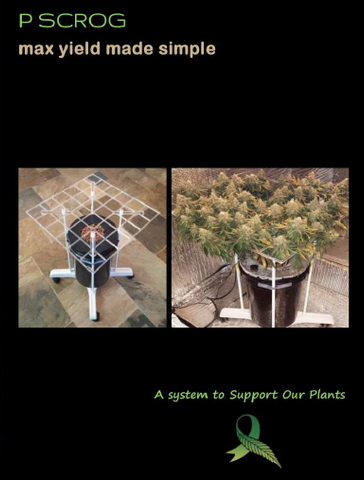
P SCROG Techniques

P SCROG Kits
or
SupportOurPlants@SCROGGER.com
- Gary Memelstein
- Tags: best how to scrog guides best scrog guides cannabis plant training grow lights growing cannabis how to scrog hydroponics indoor grow lollipopping lst optimal light band intensity scrog scrog kit scrog method scrog product scrog screen scrog technique scrogging topping trellis trellis net
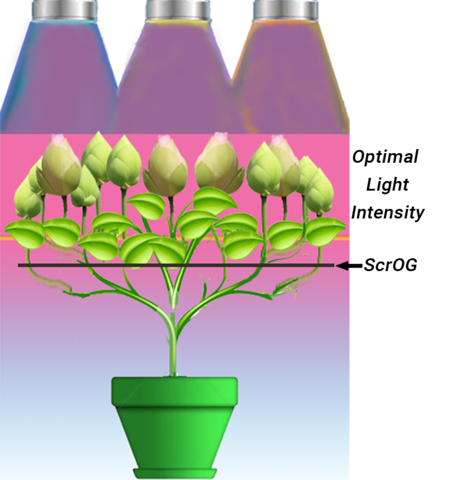
Optimizing Light

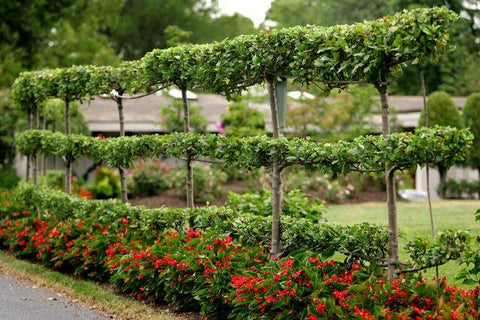
Scrogging builds on the espalier technique to grow short, bushy horizontal plants allowing for maximum bud development. The main stem of the plant is forced to multiply by Topping. Low Stress Training (LST) is accomplished by bending the branches of stems under the lower training screen resulting in more bud development per branch. Lollipopping all leaves of lower branches focuses the energy upward to bud development. A flat horizontal plane of buds, developing all in unison, can be placed in the optimal light intensity band at the same time. No buds are stunted due to upper growth shading and all plant energy is focused solely on bud development.
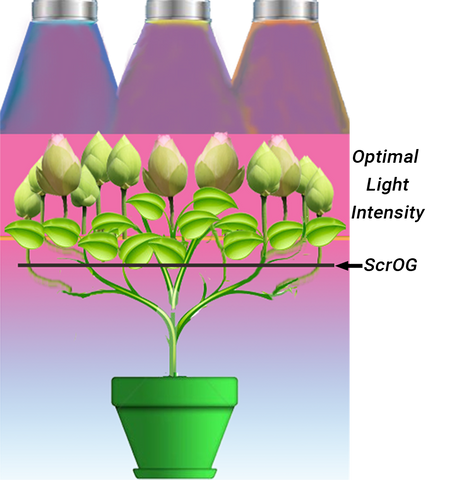
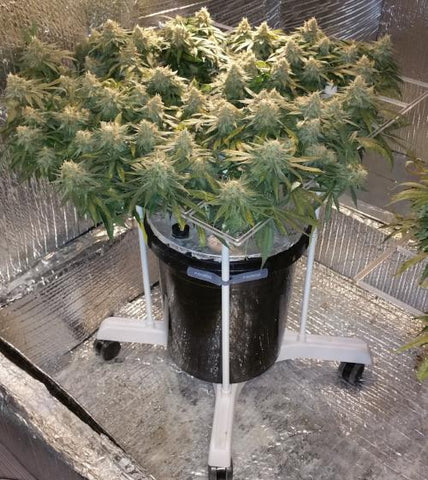

P SCROG Kits
or
SupportOurPlants@SCROGGER.com
